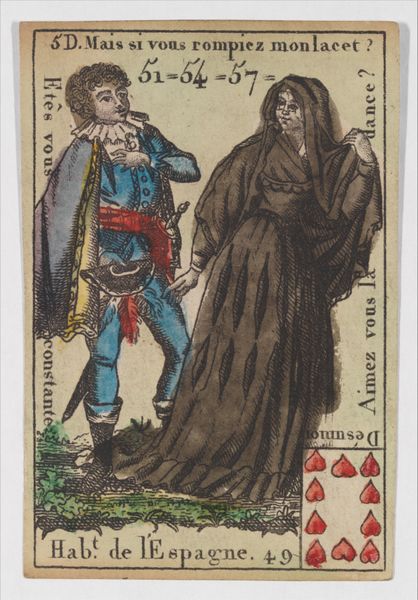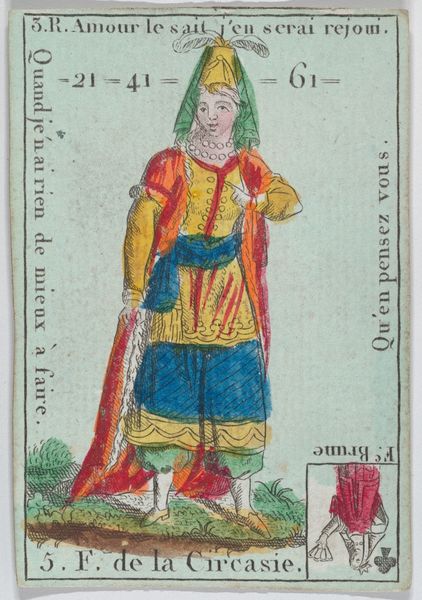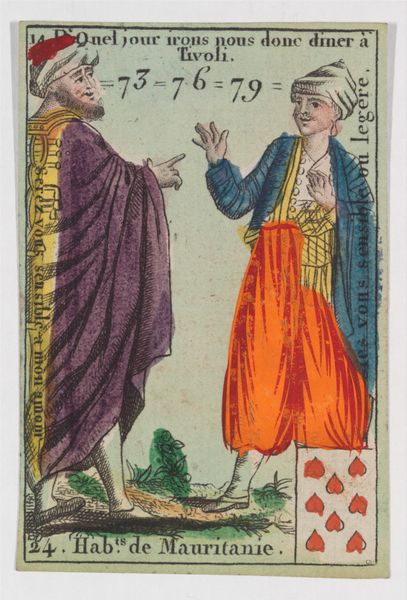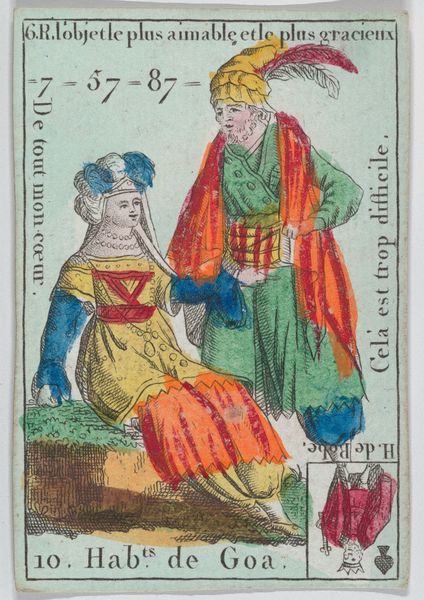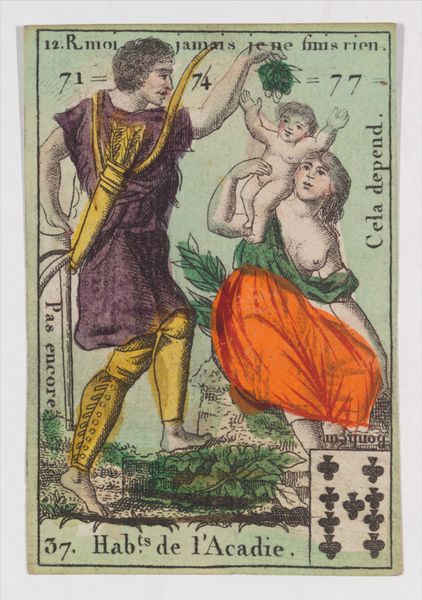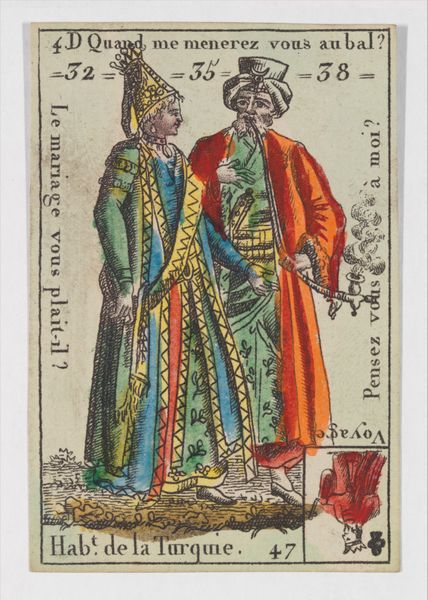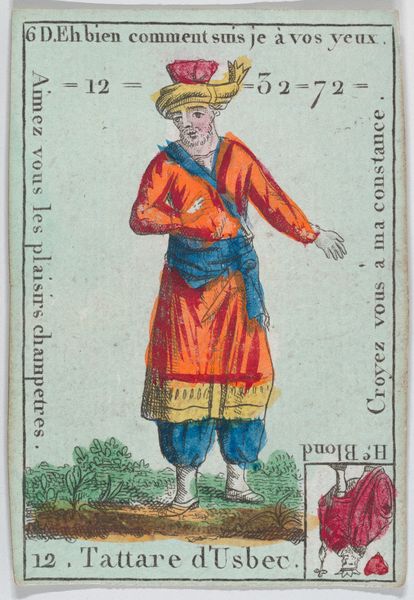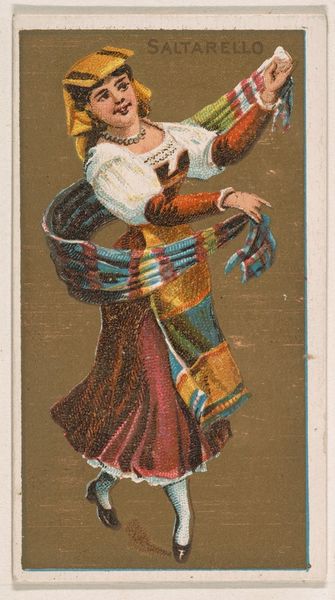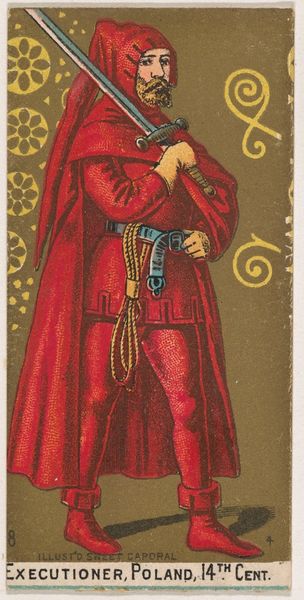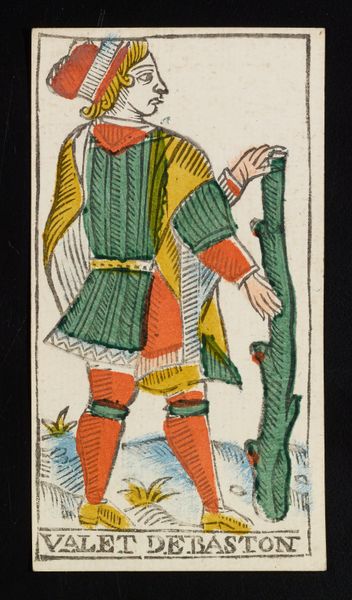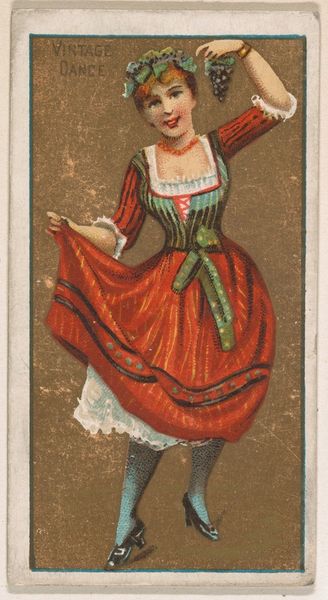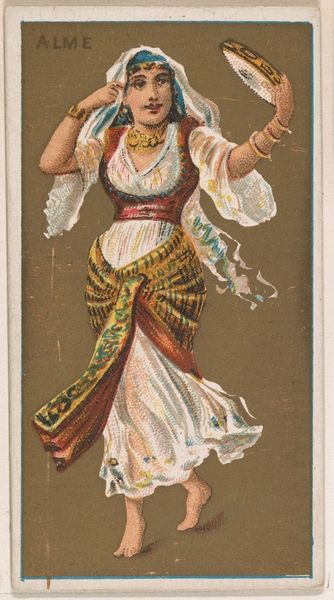
F.e de la B. des Manilles, from the playing cards (for quartets) "Costumes des Peuples Étrangers" 18th century
0:00
0:00
drawing, coloured-pencil, print
#
portrait
#
drawing
#
coloured-pencil
# print
#
coloured pencil
#
costume
#
genre-painting
#
rococo
Dimensions: 3 3/16 × 2 1/16 in. (8.1 × 5.3 cm)
Copyright: Public Domain
Editor: Here we have an 18th-century coloured pencil drawing, or print, titled "F.e de la B. des Manilles, from the playing cards (for quartets) 'Costumes des Peuples Etrangers.'" The costume depicted is so vibrant! What do you see in the context of its creation and purpose? Curator: I’m drawn to the materiality and the printmaking process itself. This isn’t high art hanging in a salon. It's a playing card. This tells us about accessibility and distribution. How did images and ideas circulate in the 18th century? Was color applied by hand, adding to its value? These cards are commodities reflecting, and constructing, ideas about "foreign peoples" and their "costumes" through reproduction and circulation. Editor: So it's less about the artistic skill and more about how the image functions within society? Curator: Exactly. Consider the labor involved in creating potentially thousands of these. Who designed it? Who cut the block or plate? Who applied the colors? These were not always prestigious roles, but essential to disseminating visual information. How does the commercial context shape its creation and reception? Editor: It's fascinating to think about the production line behind something that seems so quaint now. Curator: And beyond the production, how were these images consumed? Were they merely for entertainment, or did they play a role in shaping perceptions of different cultures? These cards likely served as a tool of cultural consumption, commodifying difference. Did owning or playing with this card create some kind of identity for the owner? What are your thoughts? Editor: I never considered the cultural and labor aspects behind such an unassuming image! I’m definitely looking at it differently now. Curator: Indeed! By examining the materials, production process, and social context, we can uncover so much more than just surface-level aesthetics.
Comments
No comments
Be the first to comment and join the conversation on the ultimate creative platform.

